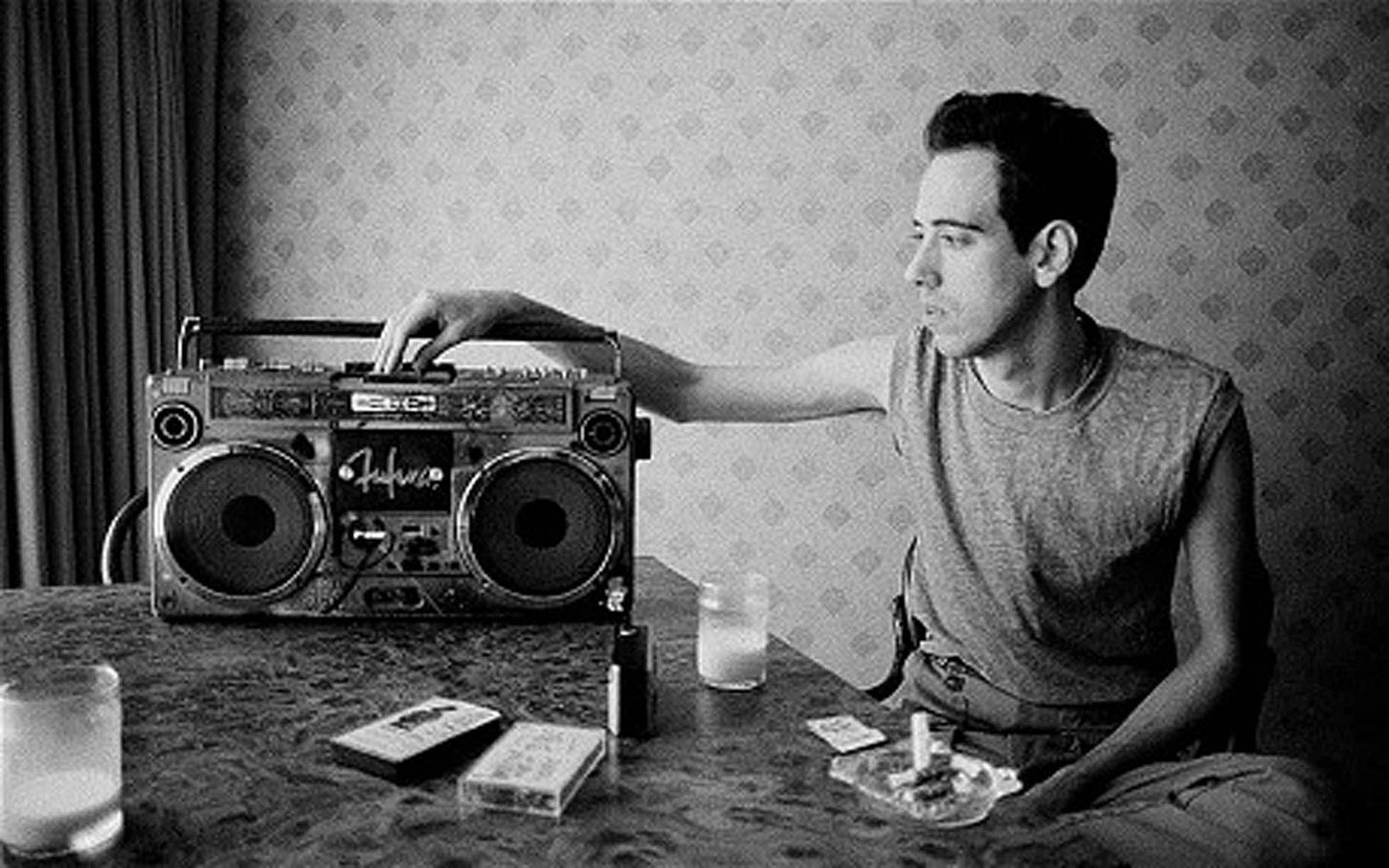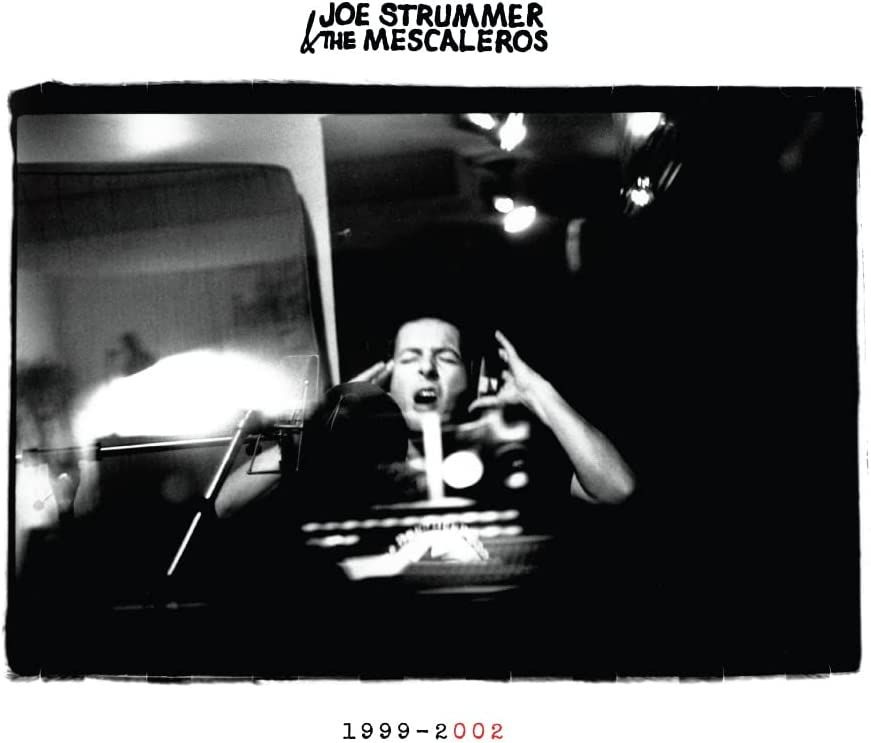The Clash: Letting That Raga Drop For Fun and Profit
Part Two of an extended look at Combat Rock, the album that made International Rock Stars outta The Clash. But at what price? All in celebration of Joe Strummer’s 70th birthday on August 21st.
The Clash standing before the Apocalypse Hotel, Freston Road, London W.11, 1982 (photo: Pennie Smith)
Sharif don’t like it! Rock the Casbah! Rock the Casbah!
You COULD NOT escape that fucking song all summer! Just the year before, C101 had no room for The Clash on their playlist, preferring cueing up “Stairway To Heaven” on Turntable One and “Freebird” on Turntable Two for the 1000 millionth time. Suddenly they got the message that it was 1982, managing to shoehorn “Rock The Casbah” into their Two Song All Zeppelin and Skynyrd Playlist. Why? How? Because once an hour, MTV featured The Clash frolicking in mock battle fatigues before oil derricks and pump jacks somewhere outside of Austin, Joe Strummer showing off his new Mohawk. Mick Jones' wish expressed to Rolling Stone just last year came true: The Clash were now Van Halen-level International Rock Stars.
But couldn’t it have happened with “I Fought The Law,” rather than this…this…DISCO RECORD?!!
Truth be told, I was too young to appreciate “Rock The Casbah.” Properly, the single was about as far removed from four-on-the-floor disco as Anton Lavey was from the Pentecostal Church. Yes, it was danceable enough to drive a gaggle of American Bandstand record raters to give it a 10, if prompted by Dick Clark. But those rhythms were more Afro-Cuban, or something Latinate – a rhumba, perhaps?
In retrospect, “Rock The Casbah” was a great record. It draped a pop sensibility over the genre-hopping that became The Clash’s trademark over the last three years. Front and center: A clever Strummer lyric converting yet another of (mis-)manager Bernie Rhodes’ wrongheaded diktats about every song on Combat Rock being a “raga.”
Joe Strummer, Mick Jones and Paul Simonon, filming the “Rock The Casbah” video outside Austin, TX., 1982.
“I got to looking at it, and for some reason I started to think about what someone had told me earlier, that you got lashed for owning a disco album in Iraq,” Strummer remarked years later. “So I transferred that line from Bernie to these religious leaders who tried to stop people from listening to music.”
Now everyone was listening to The Clash, probably even in Iran. All thanks to a song written by the drummer. The one fired after finishing recording the album, due to a rapidly escalating heroin habit.
Wait – weren’t these guys notorious for spliffing it up like asthmatic monkeys? Just how dysfunctional was this band?
Well, dysfunctional enough that Rhodes was back, doing that hamfisted bumbling he called “management.” For every brilliant stroke he had, such as the Bond’s residency, he had 15 more inappropriate ones. Such as The Clash following up Sandinista! with an album of “New Orleans music.”
“I was, ‘Huh?! I want it to be a rock ‘n’ roll album,’” recalled Jones. “It kind of threw me, but we all tried to do some New Orleans rhythms at first. None of us seemed to really be communicating and it was all driving us a bit crazy, I think. Nobody seemed to be enjoying it anymore.”
All anyone needs to understand how badly that famous Clash camaraderie had eroded by this point is a quick peek at the photos Pennie Smith shot for the Combat Rock sleeve. No one smiles. In fact, The Clash never smiled in photos again. They are not enjoying each other’s company, and in fact look away in every direction. Personal space is strictly observed – rock’s most touchy-feely band no longer hung off one another. Five years of non-stop activity – near-constant road work, almost-as-non-stop studio time, continuously living in each other’s pockets with no break – was killing them. Everyone from Strummer to aide de camp Kosmo Vinyl has said retrospectively they could have stood a break of maybe six months. But in their minds, there was a planet in need of a Clash face lift.
The creative engine of the band, the Strummer/Jones songwriting alliance, showed signs of strain. Remember: Topper Headon wrote “Rock The Casbah” – that had to rankle! Truth be told, no one saw eye-to-eye on the musical direction of Rat Patrol From Fort Bragg. Strummer wanted a back-to-basics rock ‘n’ roll album, perhaps something closer to the early days. Jones doggedly pursued the experimentation with hip hop and New York street style which so enthralled him during the tracking of Sandinista! And the Bonds residency. Paul Simonon didn’t much care what shape the music took, except to argue violently with Jones for two hours over the bass sound, which he wanted louder and fatter in the mode of his beloved reggae. Topper was too strung out to care. And no one wanted to be in the studio at the same time, especially Strummer and Jones.
What they got was all the above, produced and mixed by Jones, whose vision was shared by no one. The results? A two-record set, crammed to the hairline with those lengthy ragas Rhodes bitched about. Rat Patrol more resembled a Prince record than one by The Clash. Except it was nowhere near as good as a Prince record. So what did they expect when their lead guitarist seemed wholly uninterested in being a guitarist anymore?
Paul Simonon, during the filming of the “Should I Stay Or Should I Go” video, New York City, 1982.
“Mick did some mixing on the tapes, but I don’t think any of us were particularly pleased with it,” Simonon later remarked. “I think at that stage Mick’s guitar turned into a bassoon or something. I don’t know, it just wasn’t a guitar anymore and that was sort of odd. Maybe he got bored of playing guitar – so he had various bits of equipment which would make his guitar sound like a harpsichord or whatever he wanted it to sound like. It was almost an orchestra but I don’t know that he completely understood how to use it.”
Jones drenching his Les Paul in layers of MXR delays/flangers/choruses/whatever got so bad, Strummer put his hands on Mick’s guitar neck mid-song one night during the Combat Rock tour, begging him: “Stop playing! Just stop!”
“We finished off recording Combat Rock and tried to mix it as we were going along on that Far Eastern tour,” mused Jones. “We booked studios in Australia and after the gigs we were totally dehydrated and taking salt tablets and trying to [mix], but it ground to a halt.
Mick Jones and his boombox customized by graffiti artist Futura 2000
“It wasn’t as focused or as well put together as it might have been,” he continued. “We hadn’t stopped since after Sandinista! We had too much material and it was a sprawling mess. But Glyn Johns took hold of it and made it into something presentable.”
Then the (mis-)manager had the brilliant idea that the singer should disappear to bolster anemic UK ticket sales. Where the UK press had been loving Clash cheerleaders through the late ‘70s, especially NME, they now acted like jilted, bitter exes. Especially NME. Week after week, every page of the latter rag featured at least one snide barb against their former darlings, even in articles having absolutely nothing to do with The Clash. Especially rancid were snipes about the band playing the Bonds residency as race riots erupted across the UK. Like the band that wrote “White Riot” should have flown home immediately to watch their early anthem come to life, instead of (sneers) breaking America.
The result was a band rather reluctant to give interviews to British papers. It also meant advance ticket sales for the forthcoming UK leg of the Combat Rock tour were sluggish.
“We were going to do a British tour, and Bernie told Joe he should do a runner, and I don’t know what the reason was,” said Jones. “Joe did do that, but then he obviously couldn’t stand it and actually vanished from everyone.”
“This is a stupid thing, really,” Strummer chuckled in Don Letts’ 2000 Clashumentary Westway To The World. “Bernie said to me as the tour was about to start, ‘The tickets are not selling in Scotland.’ But he didn’t understand the nature of The Clash fan, who is used to doing what is called a walk-up. Bernie and any promoter should have known that Clash fans wouldn’t send in for tickets three weeks ahead. They like to walk up on the night. But Bernie said, ‘Look, you need to disappear or something, ‘cos if we go on tour….’ And I was too stupid to say, ‘Look, Bernie, shut up. There’s gonna be a walk-up.’ In the UK, we weren’t as highly regarded as in other parts of the globe, so Bernie said, ‘Disappear.’ I need an excuse to cancel the tour.’ Like a fool I said, ‘Alright.’ He said, ‘Go to Austin, Texas, hang out with Joe Ely.’ So I went to France and just dicked around for a while. I ran the Paris Marathon and stood around in bars.”
A freshly-mohawked Joe Strummer, after running the Paris Marathon on his “runner.,” 1982
“It was another case of Paul and I being kept in the dark, and it was like that a lot of the time,” added Jones. “We didn’t know what was going on and were as concerned as everyone else.”
“I should never have listened to that, but you have to have some regrets,” concluded Strummer. One certain regret? Being convinced to fire Topper Headon almost immediately upon his return.
End Part Two
Joe Strummer 002: The Mescaleros Years box set, featuring Tim Stegall liner notes, out September 16 via Dark Horse Records
You read correctly: The Joe Strummer Estate contacted me last December to annotate this, the first comprehensive collection of Joe’s Mescaleros work. I spoke with his widow Lucinda Tait, all the Mescaleros, various producers and engineers, and even the legendary Tymon Dogg to chronicle the music that finally dragged Joe out of his post-Clash “wilderness years” and brought him back to the world. All three original Joe Strummer and the Mescaleros albums are beautifully remastered and presented in their original sleeves, alongside Vibes Compass, collecting 15 B-sdes and rarities – demos, outtakes, unreleased material. A nice full-color book contains my extensive liner notes, alongside a clutch of unseen photos from the Strummer archive, as well as reproductions of Joe’s handwritten lyrics and chord charts. All due September 16.
My apologies for the delay in this multipart examination of Combat Rock. Next Tuesday: Topper’s out and Terry Chimes is back, as The Clash work America hard. But all is not right. Should Mick Jones have stayed or should he have gone? Please share, and remember that paid subscriptions are the best way to support unfettered punk journalism like this.
#timstegall #timnapalmstegall #timnapalmstegallsubstack #punkjournalism #theclash #combatrock #40thanniversary #joestrummer #mickjones #paulsimonon #topperheadon #sandinista! #londoncalling #punkrock #reggae #hiphop #bondsinternationalcasino #timessquare #electricladyland #newyorkcity #london #bernierhodes #joestrummer70thbirthday









I grew up in a small town in North Texas and was an avid Clash fan, my friend Cathy being the only other. At a Joe Ely gig in a converted Shakey's Pizza the band took a break and Joe pointed at me and said "Come here, let me tell you about the Clash!". He proceeded to tell me how Strummer was missing and they were looking for him in Texas. I had tickets for the Combat Rock tour in Dallas in a few weeks and Ely just said "They ain't gonna be there".
Of course, Ely was the first person I'd ever talked to that was in a band, much less someone who had made a record. I was just some wide eyed small town kid.
I told the other three people I knew who had tickets to the show about the whole thing and no one believed me until it was in Rolling Stone the next week.
My first brush with the music business which has kept me employed for the last 40+ years.
Interesting stuff. I always felt a bit annoyed the Clash started to become popular in the US. I try to forget C101. OK, I don't listen to the radio much any more. (I don't even listen to stuff I write for a sports radio)